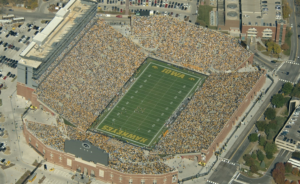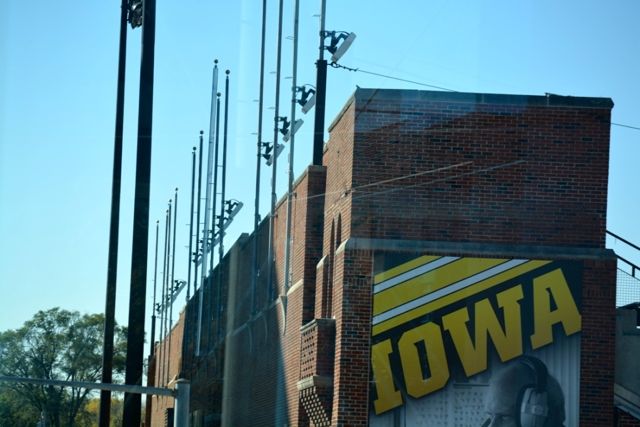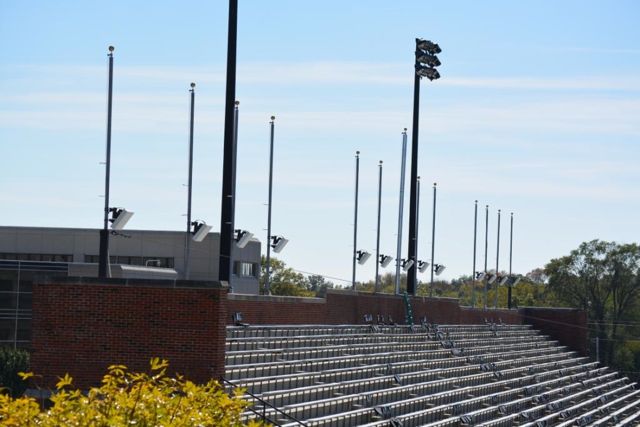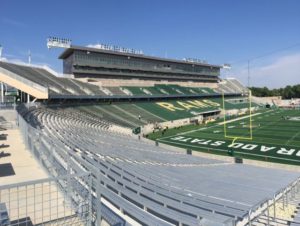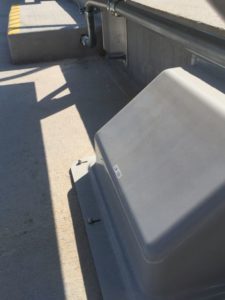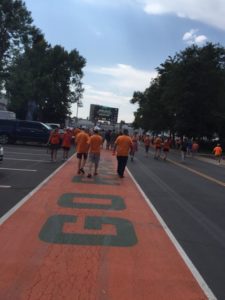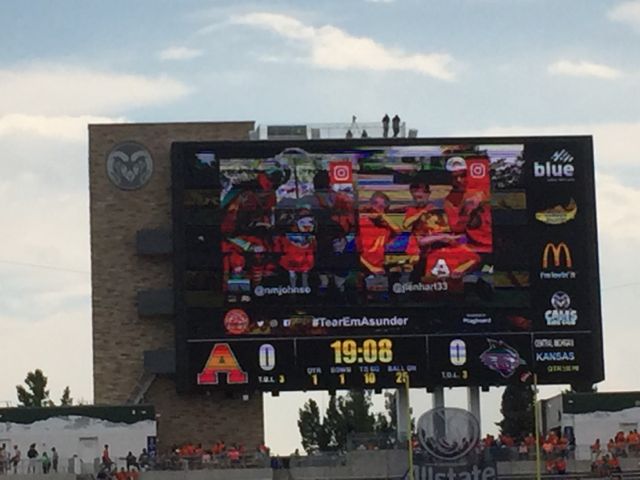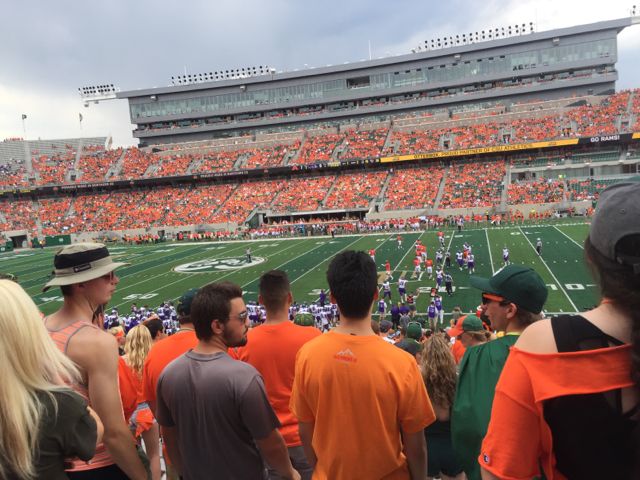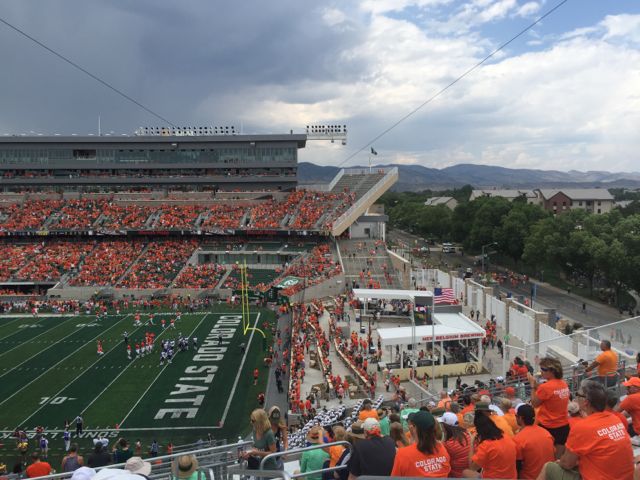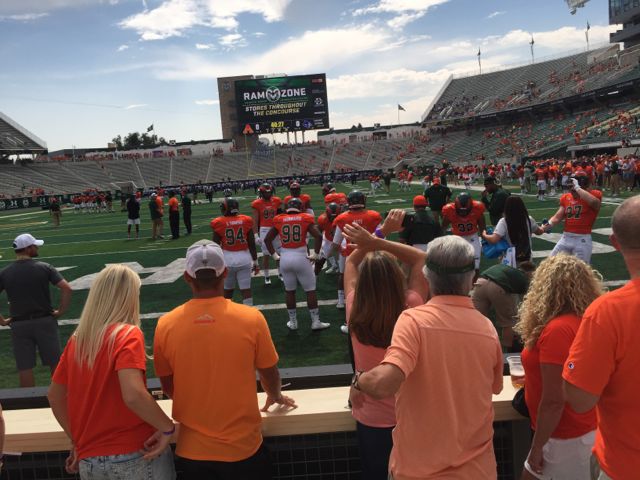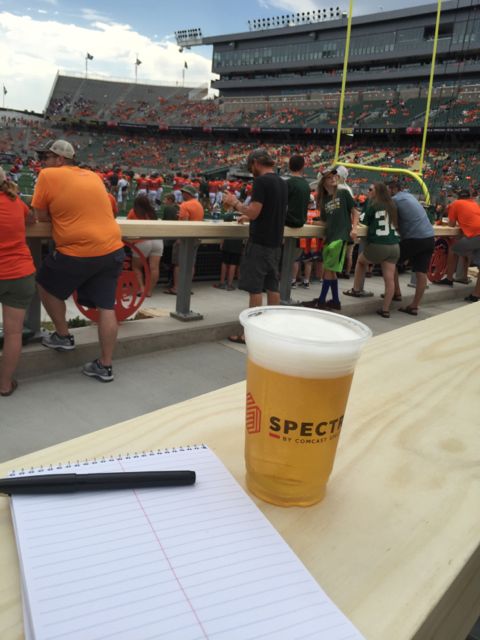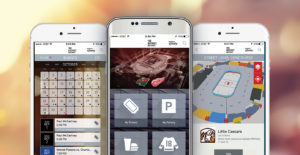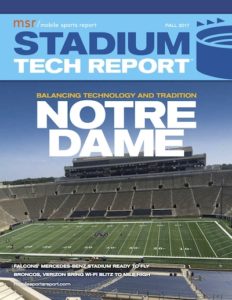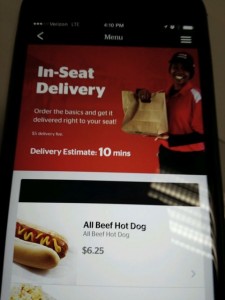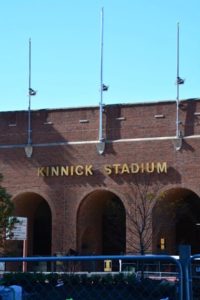
DAS antennas seen on flagpoles at Iowa’s Kinnick Stadium. Credit: Gary Turner / CWS (click on any photo for a larger image)
Though we don’t have any stats or speed test reports yet, Connectivity Wireless said the DAS was scheduled to begin operation at the start of the season, with fine-tuning taking place during the first few home games. Verizon Wireless and U.S. Cellular were active on the DAS at the start, according to Connectivity Wireless, with AT&T in testing at the season’s start.
Steven Morris, director of engineering for Connectivity Wireless, said the new DAS is using Corning One gear at the core, and has a mainly fiber infrastructure with coax used only in the “final 30 to 40 feet” for connection to edge gear and antennas. Connectivity Wireless also installed a new DAS at the school’s basketball stadium, Carver-Hawkeye Arena, which should also be ready for the upcoming season. According to news reports, the DAS contract for Kinnick is $6 million, while the cost for the network at Carver-Hawkeye is $3 million.
The DAS for the 70,000-seat historic Kinnick Stadium, Morris said, has 13 sectors, and according to news reports, uses approximately 200 antennas. Like many older open-bowl stadiums, deployment at Kinnick was a challenge simply due to its design as well as to the fact the building has historical aesthetic elements, making antenna placement a job with multiple approvals necessary.
Overcoming aesthetic and design challenges
“There was no real place for antennas,” said Morris, who said Connectivity Wireless found a way to bring coverage to the main bowl seating partially through a strategy of replacing existing flagpoles mounted around the stadium’s edges with new custom-designed poles that had conduit and antenna mounts built in.
“It was a big challenge for us, with lots of approvals to go through,” said Morris. Connectivity Wireless also had to trench fiber from the stadium to the campus’ network head-end, which is located in one of the school’s hospitals about a mile away from Kinnick. All this work needed to be done in the spring and summer, Morris said, since you can’t dig underground in Iowa where winter weather can regularly produce sub-zero temperatures.
With plenty of fiber capacity now in place, Morris said Kinnick Stadium could also eventually install a Wi-Fi network, though it would most likely mean some kind of under-seat AP deployment with its associated coring costs. However, there still may be some legal entanglements regarding any future network deployments, as Iowa is still involved in a lawsuit with American Tower, which it had originally contracted with to build the Kinnick DAS. That 2013 deal, however, was terminated by the university in 2015, and the matter is still being adjucated under a lawsuit filed by American Tower. American Tower would not comment on the status of the lawsuit.
More flagpole-mounted DAS at Kinnick Stadium; Credit both photos: Gary Turner / CWS
